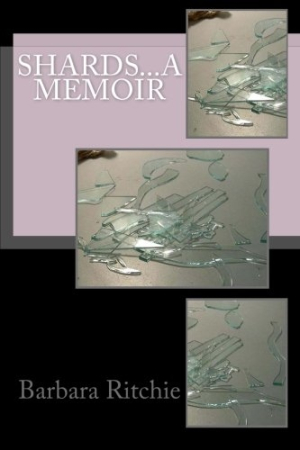
Shards...a memoir
As a twenty-five-year-old mother of three in 1967, Barbara Ritchie had never even heard the word “lesbian” until she went to work in a local factory and found herself attracted to another woman. Her life’s path veered abruptly, turning her home into a battleground and upsetting the orderly, predictable world she once knew.
In presenting her story, Ritchie chooses to share fragments of her life both before and after that point, and she writes each vignette like a short story. She notes in the introduction that the experiences are true but that creating a fictionalized memoir allowed her to make some people and events into composites. In many ways, the approach also provides a sense of objectivity about difficult events and gives Ritchie greater freedom to contemplate the emotions and motivations of others. Some of these “shards”—which give the book its title—fit neatly together, but many times they are stand-alone stories that convey greater power as a single, focused event than as a piece of a larger whole.
For example, in “The Sand Quarter and the Starfish,” Ritchie details the budding relationship started at her factory job, but also weaves in other memories of that intense time, like taking her children to the beach. When one of her sons is anguished over the death of the starfish he took home as a prize, Ritchie’s character, Jean, tries to comfort him but feels parental guilt over her failure to explain that the starfish wouldn’t live out of the water. The parallel between the intertwined stories is subtle and heartwrenching: Jean struggles with feeling like a starfish herself while refusing to throw herself back into the sea of ignorance about her true nature.
In other stories, Ritchie switches to a first-person narrator, offering a deeper and richer glimpse of her emotional landscape. She drifts between time periods, unpacking memories from her childhood in one story, then skipping ahead forty years to her brother’s suicide, and following that with a quick explanation of why she treasures her ankh tattoo at age sixty-five.
The staccato pace of the stories works well to create a portrait of Ritchie, and her graceful, wistful writing style pairs beautifully with the many complicated situations that have given her life meaning. “Think of your life as a mosaic: up close you are immersed in the event of the moment, shaped and tinted by thoughts and emotions,” she writes. “Step back, and see how each piece becomes part of a pattern.”
Ritchie’s mosaic doesn’t always fit together neatly, and that’s her point. She delivers fragments that shimmer with honesty but remain as singular events that transformed her in distinctive ways.
Reviewed by
Elizabeth Millard
Disclosure: This article is not an endorsement, but a review. The publisher of this book provided free copies of the book and paid a small fee to have their book reviewed by a professional reviewer. Foreword Reviews and Clarion Reviews make no guarantee that the publisher will receive a positive review. Foreword Magazine, Inc. is disclosing this in accordance with the Federal Trade Commission’s 16 CFR, Part 255.
